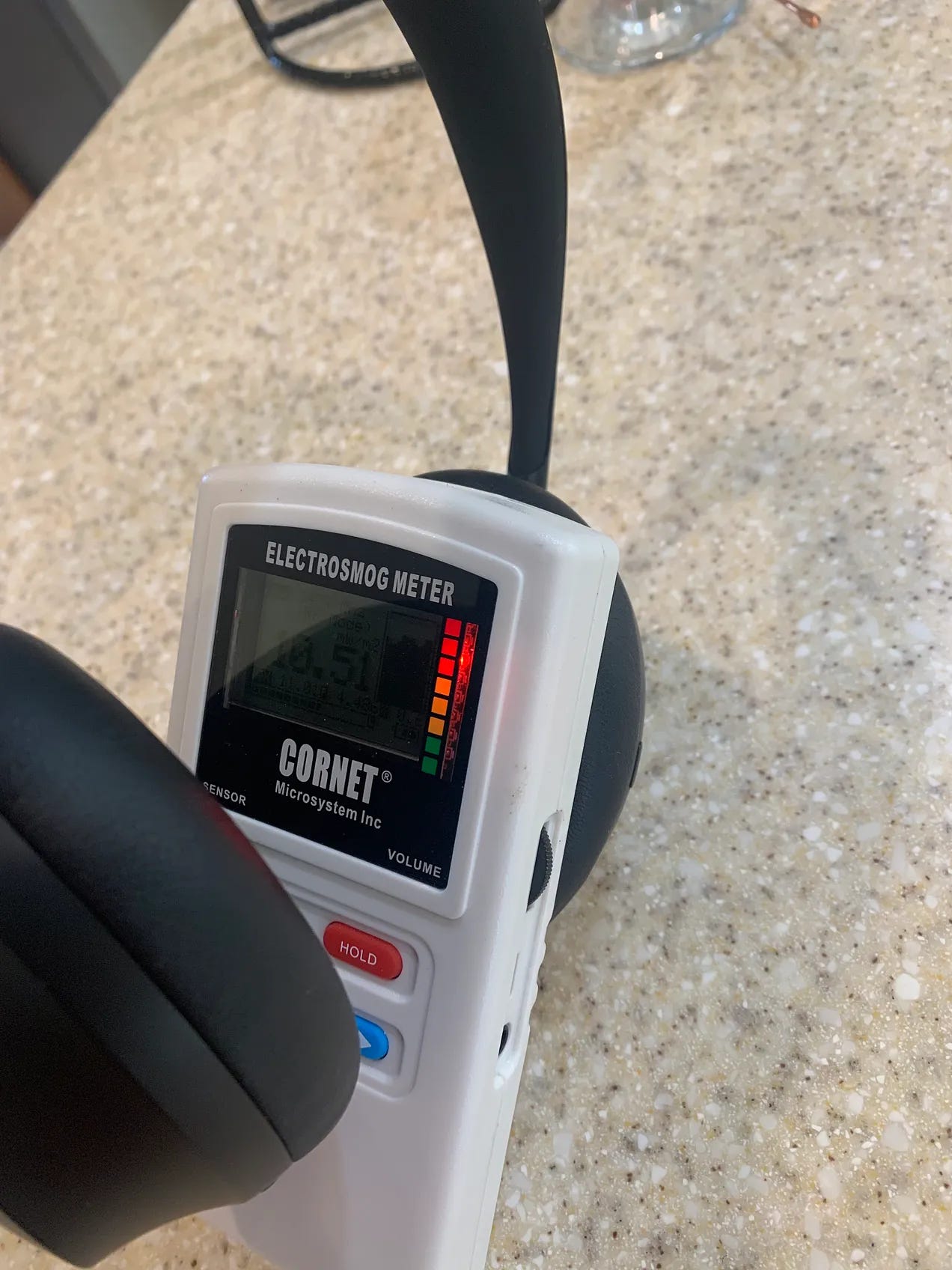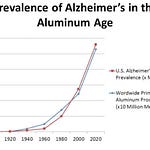Ms. Peterson was on the point of getting joint replacements but cured her Juvenile RA in a month using a carnivore diet.
Yoho note: To learn more about these diets, go through Greg Dennis, MD's, podcasts at FitRx. He has a lot to say about keto and carnivore. You can view him and his guests on YouTube or Buzzsprout.com. He also covers intermittent fasting, burning fat, "plants are trying to kill us," and how a low-carb diet improved a patient's health and allowed her to get off all medications. He covers many other vital topics, including red light therapy.
Greg has interviewed me several times. Although we both were traditionally trained, we gravitated toward functional medicine. He is younger than me and still practices.
Here is Mercola
I added audio and abridged this for clarity.
Summary
- Conventional medicine doesn't offer a lot of hope for rheumatoid arthritis (RA) sufferers, as it is focused on treating the symptoms — typically using highly toxic drugs
- From the late 1980s and for the following ten years, I treated over 3,000 patients with rheumatic illnesses. These included systemic lupus, scleroderma, polymyositis, and dermatomyositis. Lifestyle changes can be very effective
- The vital elements to successfully reversing RA include optimizing your vitamin D levels, consuming a diet that's very low in seed oils, optimizing your circadian rhythm, and embracing time-restricted eating
- Following a carnivore diet, using low-dose naltrexone, and addressing emotional trauma are other essential elements of resolving RA
Over 54.4 million people in the United States have an autoimmune disease.1 Some of the major ones are rheumatoid arthritis (RA), multiple sclerosis, and inflammatory bowel diseases such as Crohn's and ulcerative colitis.
Since I have a massive clinical experience with RA, I will use it as an example of how all autoimmune diseases should be treated. They all have "antigens" that confuse your immune system. These confuse your immune system into thinking that some of your tissues are foreign invaders.
From the late 1980s and the following ten years, I treated over 3,000 patients with rheumatic illnesses, including systemic lupus erythematosus (SLE), scleroderma, polymyositis, and dermatomyositis. RA has a devastating prognosis for many people.
Rheumatoid arthritis affects about 1% of our population, and at least 1.4 million Americans have definite or classical rheumatoid arthritis, although it's probably closer to 2 million. This number has increased in recent years—in 2014, only about half of a percent of the population suffered from RA.
Since around 7 million Americans have an inflammatory rheumatic disease, you likely know someone with it. It is often a devastating illness. Most patients with rheumatoid arthritis have progressive disability.
The following suggestions potentially improve all autoimmune diseases.
Testimonial From One of My Patients
After giving a presentation in Orlando several years ago, I ran into a former patient, Sarah Allen. After talking to her, I decided we needed to share her important story as it would provide hope for so many who struggle with this disease. She first came to see me in August of 2003. Even though she was only 28 years old then, she'd been experiencing symptoms of RA for about three or four years. Sarah explains:
I thought I was very healthy. I was young. I was a competitive triathlete. I believed I had a pretty good diet. So, I didn't understand why I was experiencing so much pain in my fingers and feet.
I had migrating pain and many tendonitis issues throughout my body. It took the Western doctors a long time to diagnose me. It took about three years of going to different doctors before they knew what was wrong. It didn't show in my blood; I didn't have the RA factor, and my C-reactive protein (CRP) levels were normal. But it showed up on an X-ray.
Hallmark Signs of RA
One of the hallmark symptoms of rheumatoid arthritis is pain in your hands and/or feet. It tends to affect joints closest to your palm rather than those further out in the fingers.
If you have pain there, especially if it affects the same joints on both hands or feet, then almost by definition, you have rheumatoid arthritis or an RA variant. It doesn't matter what the blood work shows.
RA is far less common than osteoarthritis (degenerative joint disease). This is less crippling and serious. Degenerative arthritis is relatively easy to treat if you understand healthy lifestyles.
Rheumatoid arthritis is far more complex. It's an "autoimmune" disease where your body damages itself. It can be terminal, and some people have been known to commit suicide from the crippling pain.
Only a tiny percentage of people with the disease have a spontaneous, sustained remission without the help of medication. Disability occurs in 50 to 70% of people within five years after the onset of the disease, and half will stop working within ten years.
RA Is Typically Treated With Toxic Drugs
Traditional care doesn't offer a lot of hope for RA sufferers. It treats symptoms, and toxic drugs are usually used. These include prednisone, methotrexate, and others such as Enbril that interfere with tumor necrosis factor.
I'm passionate about spreading this information because, as Sarah can attest, there's an alternative, a drug-free strategy that works. You don't have to be stuck in a conventional treatment model and suffer needlessly.
Once diagnosed, Sarah went to a well-known rheumatologist in Milwaukee who told her she needed to stop running or risk becoming permanently disabled. He prescribed a low dose of methotrexate, an anticancer drug.
While this can be effective, the complications and the side effects are atrocious. Sarah had to check her liver tests every month, and even though she was only on a low dosage for about three months, she started losing hair. A rheumatology researcher at the Mayo Clinic told her to keep taking the drug but expect it to shave 15 to 20 years off her life.
"I was afraid of what that drug was going to do to my body," Sarah says. "The physical therapist who recommended I get tested for RA told me there was a lot I could do naturally. So, I read many books about rheumatoid arthritis and different alternative treatments. I read that it could be connected with an infection and that a low dose of antibiotics was prescribed. I then came across your name in a book. I looked you up, found you in Chicago, and made an appointment."
Dr. Brown's Protocol
The book she's referring to is The Road Back: Rheumatoid Arthritis — Its Cause and Its Treatment, by Dr. Thomas McPherson Brown and Henry Scammell. Brown was a respected board-certified rheumatologist (he passed away in 1989), but, like me, he was a rebel.
He disagreed with the use of prednisone, the standard of care for RA in the '40s and '50s. He believed RA was an infection caused by mycoplasmas, so he used an antibiotic, tetracycline, instead.
Eventually, he modified his treatment to more potent forms of tetracycline, such as minocycline. Brown ultimately helped bring over 10,000 patients into remission. I first saw his work in a "20/20" special broadcast shortly before he died in 1989. It inspired me. I decided to study his work, began using his protocol on RA patients in my practice, and was impressed with the results. Eventually, however, I abandoned treatment with antibiotics.
Some physicians still use his protocol, but only a few use every element I list below. If you see one of these physicians, I encourage you to follow all of their advice and not just part of it.
The following are the crucial steps to reverse RA and other autoimmune diseases:
Optimize Your Vitamin D Levels Without Pills
This is the most basic and least expensive strategy that you can implement. The last twenty years have seen enormous attention to the importance and value of vitamin D, particularly in treating autoimmune diseases like RA.
I believe it is now virtually criminal negligent malpractice to treat a person with RA and not aggressively monitor their vitamin D levels to confirm a therapeutic range of 50 to 70 ng/ml.
Your body was designed to get all the necessary vitamin D from the sun. I have not taken vitamin D in two decades, but my levels range up to 90 ng/ml. So the KEY is to get about one hour of sun exposure a day around solar noon. This is 1 p.m. if you are in Daylight Saving Time, and you should wear minimal clothing. You can walk during this time to exercise.
This is so important because getting vitamin D from the sun also provides many other benefits than vitamin D optimization. These include:
Increasing mitochondrial melatonin, which will radically lower oxidative stress where you need it most, in the electron transport chain of the mitochondria. Not only is melatonin a powerful antioxidant, but it causes your body to produce glutathione, which is essential for controlling oxidative stress.
Men will be pleased to know that a 2021 study showed that sun exposure for around 30 minutes near solar noon increases testosterone levels.
It will increase structured water in your body, greatly facilitating red blood cell transport through your capillaries.
It will increase nitric oxide to help optimize your blood pressure.
It will help convert vitamin A (retinol) to retinoids, which are required for optimal immune functioning.
Sunburn, skin cancer, and sun exposure: The key is understanding that consuming omega-6 fat-containing linoleic acid (LA) is the most significant factor contributing to this. Seed oils and processed foods must be avoided. These are loaded with LA. This is why skin cancers like basal and squamous cell carcinoma occur. You will likely not burn or get skin cancers if you have a low LA intake.
Most people cannot get enough ultraviolet B from the sun in late fall to early spring unless they live south of the 20th latitude. Ideally, optimizing your vitamin D by safely exposing your skin to UVB is better. Even better would be to ensure that you get concurrent near-infrared (IR) exposure simultaneously because this increases melatonin and suppresses free damage from the UVB.
Take 500 to 1000 mg of magnesium and 150 mcg of vitamin K2 (not K1). These are essential cofactors to optimize vitamin D's function. The only way to know your vitamin D level is to test it. Most people I know are shocked at how low their level is.
A diet that is ultra-low in seed oil
While considered an essential fat, when consumed excessively — which over 99% of people do — LA (an omega-6 polyunsaturated fat or PUFA) acts as a metabolic poison.
Most clinicians who value nutritional interventions to optimize health understand that the vegetable oils with the most omega-6 PUFA must be avoided. Most fail to appreciate that even if you eliminate vegetable oils, you may still miss the mark.
You're probably still getting too much of this dangerous fat from supposedly healthy food sources such as olive oil and chicken, which are fed LA-rich grains. Another common mistake is to increase the amount of omega-3 that you eat. Many know that the omega-3 to omega-6 ratio is essential and should be about equal, but merely increasing omega-3 can be a dangerous strategy.
Over the last century, thanks to the fatally flawed research suggesting saturated animal fat caused heart disease, the LA in the human diet dramatically increased. It was about 2 to 3 grams a day 150 years ago, but now, we consume 30 or 40 grams daily. LA made up 1% to 3% of the energy in the human diet, but now it is 15% to 20%.
This radical change has had a catastrophic impact on health for millions, if not hundreds of millions, of people.
Excess LA consumption damages your metabolism and impedes your body's ability to generate energy in your mitochondria. It is likely the primary factor for the increased obesity, cancer, heart disease, diabetes, and dementia exploding over the past century.
Compelling evidence shows that eliminating seed oils from your diet will dramatically reduce sunburn and skin cancer risk because dietary LA controls susceptibility to UV radiation damage. It's like a dial that controls how fast it happens and how fast you get skin cancer.
Time Restricted Eating (TRE) and Circadian Rhythm Optimization
In July of 2022, we learned that fewer than 1 in 14 adults in the US have optimal cardiometabolic health. This means they cannot seamlessly shift between burning fat and carbs as their primary fuel source and, as a result, have impaired immune function.
Your immune system is not as good if you have an autoimmune disease. Fortunately, a simple, inexpensive intervention can help almost everyone with this issue--TRE.
Research by Satchidananda Panda, Ph.D., suggests 90% of people eat for more than 12 hours a day. Over time, this habit wreaks havoc on metabolism and limits your ability to metabolize fat as a primary fuel. When you eat throughout the day and never skip a meal, your body adapts to burning sugar as the primary fuel, resulting in the down-regulation of enzymes that utilize and burn stored fat.
As a result, you become progressively more insulin-resistant and start gaining weight. Efforts to lose weight become ineffective because to lose fat, your body must first be able to burn fat. Many biological repair and rejuvenation processes occur while you're fasting, another reason why all-day grazing triggers diseases while fasting prevents them.
Time-restricted eating is what it sounds like. It's a form of intermittent fasting where you eat all your daily meals within a restricted "window" that ranges from six to eight hours. That means you're avoiding food (fasting) for 16 to 18 consecutive hours. Eating within six to eight hours is likely metabolically ideal for most people. Eighteen-hour TRE windows work better for overweight people, and 16-hour TRE windows are used for normal-weight individuals.
The key is to make sure you don't start your TRE window too late in the day. Your last food should be at least three to five hours before sleep. Eating before bed impairs health.
Longer fasts and calorie restriction are more difficult, but TRE can work for anyone. Calories are not limited or counted. Weakness and lethargy, signs of undernourishment, don't occur. This practice makes most people feel fantastic and, over time, reduces hunger. Wouldn't it be great not to be controlled by appetite and sweets anymore?
Circadian Optimization
Satchin Panda is one of the leading researchers of circadian rhythm. I interviewed him about his book, Circadian Code: Lose Weight, Supercharge Your Energy, and Transform Your Health From Morning to Midnight. He has many tips on how to optimize your circadian cycle. This is important because it supports a healthy immune system.
If you think about the times you became sick, many were related to altered or impaired sleeping schedules. Here are some tips to optimize your circadian rhythm:
• Be sure your sleep timing is close to the natural day and night cycles. The closer you are to the vernal or autumnal equinox or the equator, the easier it is, as the day and night are evenly divided at 12 hours each. The further you move away, the worse the change is to the polar extremes of 24 hours of night in the winter to 24 hours of light in the summer.
• Ideally, you should not have any blue light after sundown. Unfortunately, the invention of electric light bulbs has trashed our circadian cycles. The ideal light would be a candle. These have the correct wavelengths and intensity.
Alternatively, a 3-watt non-flicker red LED light 12 is acceptable and will not likely impair your circadian cycle. You should also ensure no light in your bedroom while you are sleeping. Sleep masks can be used if necessary to get into complete darkness.
• EMF exposure can disrupt your cycle and health, especially at night. Turn off your Wi-Fi and phone at night or keep it in airplane mode. These fields impair your health.
Low-Dose Naltrexone (LDN)
I encourage anyone with RA to try low-dose naltrexone (LDN). It is inexpensive and non-toxic, and I have several physician reports documenting incredible efficacy in getting people off of all their dangerous arthritis drugs. Although this is not a "natural" therapy, it has provided significant relief and is FAR safer than the toxic drugs that rheumatologists typically use.
Naltrexone is similar to Naloxone (Narcan), a narcotic antagonist that can save a person's life who has an opioid overdose. It is one of the few pharmaceutical drugs I wholeheartedly endorse in low or even microdoses and is remarkably safe.
Naltrexone blocks the opioid receptor only briefly and through a different mechanism than Narcan. When used in low dosages as LDN, the chief benefit is actually in the rebound effect after the opioid receptor has been briefly blocked. Naltrexone is one of the few interventions that enables your body and immune system to function better and restore function.
Naltrexone is a drug and requires a prescription from a doctor willing to work with you. Dosing guidelines can be found at ldnresearchtrust.org/2022_LDN_Guides. I also interviewed Linda Elsegood, a Briton who founded the LDN Research Trust in 2004, and Dr. Sarah Zielsdorf, who has a medical practice in Chicago, about the book they wrote. (Yoho note: The interviews are HERE and HERE.)
Carnivore Diet
I recommend implementing every one of the above strategies. If you are still not getting the improvement you need and deserve, consider removing all vegetables from your diet.
In the video above, Mikhaila Peterson, the daughter of best-selling author Jordan Peterson, discusses how she resolved her juvenile rheumatoid arthritis (JRA). This is relatively uncommon but notoriously challenging to treat. Her results are nothing less than spectacular and certainly provide enough anecdotal confirmation to try this unconventional but safe approach.
For the scientific justification and help in implementing a carnivore diet, one of the best resources out there is Paul Saladino, who wrote the book, "The Carnivore Code: Unlocking the Secrets to Optimal Health by Returning to Our Ancestral Diet" and also has a podcast on YouTube called "CarnivoreMD."
The reason why avoiding plants might provide relief for autoimmune diseases is that they are loaded with self-defense chemicals and antinutrients such as the following:
Nightshades: The Solanaceae family of flowering plants includes several poisonous species. But the nightshade family also includes tomatoes, potatoes, peppers, eggplant, and goji berries, which are well-known to promote inflammation and joint pain in some people.
Phytic acid: A natural substance found in plant seeds (including grains and legumes), this compound is known as an "antinutrient" for its ability to bind to minerals. Phytic acid impairs the absorption of iron, zinc, calcium, and other minerals and can promote mineral deficiencies.
Oxalates — Compounds found in dark leafy greens, such as spinach, kale, and other "superfoods." Most people can break down oxalates in the gut. For others, however, these compounds turn into sharp crystals and can lead to chronic pain, inflammation, oxidative stress, kidney stones, and autoimmune disease.
Lectins: These plant compounds can promote a leaky gut, alter the microbiome, stimulate the immune system, and trigger inflammation. The highest levels are found in whole grains, legumes, and dairy.
Salicylates are naturally occurring pesticides that plants use to protect against insects, fungi, and bacterial infection. In humans, they can cause a wide range of symptoms, from tinnitus to ulcers. High concentrations are found in avocados, berries, grapes, almonds, honey, dried fruits, and many spices.
FODMAPs (fermentable oligosaccharides, disaccharides, monosaccharides and polyols): Though not technically a defense mechanism of plants, these compounds are a collection of short-chain carbohydrates that are not adequately absorbed in the gut. FODMAPs can cause severe digestive distress for some people. High-FODMAP foods include a wide range of fruits, vegetables, cereal grains, condiments, drinks, and dairy foods.
Saponins: These protect many plants from predation by insects, microbes, and fungi; saponins have soapy, foaming characteristics. They promote a leaky gut and can cause bloating, gas, nausea, and diarrhea. Legumes (soy, beans, peas, and lentils) and quinoa are rich in saponins.
Goitrogens: These compounds can reduce iodine uptake in the thyroid gland and slow the production of thyroid hormones. The result can be an enlarged thyroid (goiter) and a host of metabolic disturbances. The most common plant goitrogens are compounds known as glucosinolates found in broccoli, cauliflower, Brussels sprouts, cabbage, kale, arugula, radishes, turnips, collard greens, bok choy, and other similar vegetables.
Phytoestrogens: These naturally occurring plant chemicals have a molecular structure similar to estrogen. Used as a natural defense against herbivores, they can disrupt animal fertility. In humans, phytoestrogens can cause hormonal dysfunction and may promote cancer. These compounds are most common in soybeans, flax, and sesame seeds.
Prolamins and glutelins: Consisting of a wide range of proteins used by plants to store energy in seeds and found primarily in grains and rice, this group of compounds harbors the primary environmental factors causing Celiac disease.
Yoho comment: Dr. Mercola also recommends a pop-psychology technique called the “Emotional Freedom Technique” (EFT). In the interests of both brevity and credibility, I deleted this section.
Mercola is a genius. But a doctor who can simplify a topic for you and offer practical advice may be a better choice. I have recently been turning to Dr. Tamara Santa Ana for advice about functional medicine. She has cured many RA patients using holistic methods.
Dr. Tamara Santa Ana:
Dr. Mercola's excellent essay on rheumatoid arthritis covers most of the treatments I consider. I often get dramatic results in a few weeks using diet, patient education, and select supplements. If this is not entirely successful, I use Vitamin D and an anti-inflammatory herbal product called "Curaphen" from Euromedica. This contains curcumin combined with Boswellia. (These occasionally cause patient sensitivities, however).
Nutrients ordinarily enter the circulatory system by passing through the single layer of cells lining the intestine. However, with a leaky gut, proteins, toxins, bacteria, and even undigested food can enter the bloodstream directly by leaking through spaces between the cells. This sets the immune system on "alert," increases inflammation, and sometimes causes RA.
I use nutrients such as l-glutamine to help heal this problem. I also recommend the elimination of gluten, dairy, and soy. Later, as the person recovers, I gradually add back some conventional foods.
Plant-based diets often help, so I consider each patient's plant sensitivities.
I obtain some information with the patient's dietary history. An easy test for specific sensitivities is for the patient to take her pulse before and twelve minutes after eating a food. She may have a food allergy if it increases more than ten beats per minute.
I additionally use frequency devices such as AO or ZYTO scanning. The theory is that every healthy tissue has a specific frequency. These devices seem to accurately predict nutritional issues. I may also check food sensitivity with blood tests. Cyrex Labs in California and Alcat in Florida are two companies that I use.
Dr. Mercola mentioned that some patients do better on a meat-based diet because of their plant sensitivities.
I educate each patient about supporting their intestinal "microbiome" with the right foods. I may also use natural antimicrobials such as olive leaf and artemisia, plus certain supplements to enhance "good" bacteria levels. I avoid most supplements.
I do recommend certain fermented foods, but many patients do not tolerate these early in their treatment. I also recommend several pre- and pro-biotics to rebuild the gut bacteria.
Gluten and dairy comprise about 80 percent of food allergies. These are immune responses involving IgE antibodies. I recommend eliminating soy, additives, and simple carbohydrates such as sugar. Vegetable oils can be highly inflammatory as well. These include corn oil, sunflower, canola, and safflower oils. The Nightshade plants such as tomatoes, eggplant, peppers, and potatoes can also be problematic.
As Dr. Mercola mentioned, some patients are sensitive to most plants. I steer them toward a carnivore (meat) diet.
RA patients and those with related autoimmune conditions such as lupus usually have pain, and some are immobilized. As a first step, I focus on relieving discomfort using herbs and diet. Willow bark and the powerful branded curcumin-boswellia combination I mentioned above help with pain.
Red-light therapy is inexpensive and a feel-good modality. (Yoho note: Dr. Mercola recommends Sauna Space near-infrared products.) I have an expensive Bemer PEMF pulsed electrical system. It improves microcirculation and relieves symptoms effectively.
I create a specific plan to encourage activity and carefully work the range of motion of the affected joints. Although some patients are initially limited, their flexibility and comfort increase as they follow my directions. I encourage the movement of their shoulders, hands, hips, knees, feet, and even cervical spine. I teach gentle stretching and resistance training. Walking and sometimes brisk walking is part of every program. As healing occurs, I increase the resistance and volume of exercise.
The secret to success with difficult autoimmune conditions is to look at every person individually. It is not one size fits all. Patient compliance and physician support are both necessary for success.
With kind regards,
Tamara Santa Ana, DC. Vital Energy Nutrition
203 N Main Street, 100. Lexington, VA 23450
(540) 462-7750 Available for virtual consultations.
Yoho again
Boron 3 mg daily often helps arthritis of all kinds. HERE and HERE are references.
More importantly, vitamin D in doses high enough to produce levels of at least 60 and sometimes far higher help all arthritis, including both RA and osteoarthritis. Taking magnesium and vitamin K2 is necessary for D to work properly. I will post more about this soon.
DHEA (dehydroepiandrosterone) works like a mild testosterone in a pill. It is over-the-counter in a long-acting preparation. The standard dose for women is 10-20 mg and 50-100 mg for men. Neal Rousier, MD, has treated his Palm Springs patients in their 80s with up to 600 mg daily. (He no longer practices, but he trained Dr. Wilgarde there.) These women function so well that some dance in the local version of Folies Bergère despite their history of severe arthritis. See Hormone Secrets for more.
From a performance:
Parting shots about healthcare butchery
Scott Schroeder called me today and said the chances were overwhelming that my Parkinson's was due to mercury. He said he had heard many stories from colleagues about situations like mine going away three months after amalgam removal.
I met a 44-year-old man at a holistic clinic in Tijuana getting treatment for his glioblastoma, the most aggressive brain tumor. This was the same cancer that killed Teddy Kennedy—and both were in their left temporal brains where they held their cell phones. When I saw my friend in the gym later, he was using Bluetooth headphones. Do you recall this photo from my EMF post?
This guy was cooking his brain with Bluetooth for hours each day for many years. I was the first to tell him about the wifi-cancer connection and how to switch his Iphone off using the pulldown menu from the right top. Like his entire generation, he was being butchered by the telecom industry. He also had gold teeth that likely had mercury underneath. I gave him Dr. Lagos's phone number so he could follow up about that.
I met a man at the gym in LA whose psychiatrist convinced him he was a "classic bipolar." The shrink gave him lithium for decades without checking his blood levels often enough. The dose he was given was too high, and it destroyed his kidneys. By the time I met him, he had lost 20 pounds and was in line for dialysis—another patient butchered by psychiatry.















Share this post